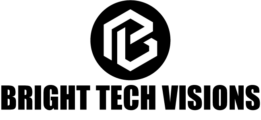The ILOVEYOU virus, also known as the Love Bug or Loveletter, was the first computer virus in the Philippines. It was released on May 4, 2000 by two Filipino college students.
In 2000, the discovery of the first computer virus in the Philippines, called I Love You or LoveLetter, marked a great significance in the country’s digital landscape. This discovery showed the growing threat of cybercrime and the importance of cybersecurity measures to protect systems from these malicious attacks.
The discovery of this virus is also like a wake-up call for the Philippine Tech Community to collaborate and take action to strengthen its whole cybersecurity system. It also alarms the government to educate the public on best practices for digital safety measures.
- Who Developed the First Virus?
- First Computer Virus in the Philippines – I Love You
- Digital Landscape in the Philippines during the Emergence
- Technical Analysis of the I Love You Virus
- Response from the Philippine Tech Community
- Impact on Individuals and Businesses
- Precautions for Individuals and Businesses
- Conclusion
- Frequently Asked Questions on the first computer virus in Philippines
Who Developed the First Virus?

Computer viruses were considered in 1970 when researchers experimented with self-replicating programs to understand computer systems better.
The first computer virus was created in 1986; two brothers from Pakistan created this virus called Brain. They built it as a marketing tool for their software company. This virus spread quickly through floppy disks and infected thousands of computers worldwide before being discovered. Computer viruses have many forms that are capable of causing damage to infected systems and networks.
First Computer Virus in the Philippines – I Love You

The first computer virus in the Philippines was called “I Love You”. This virus is also known as “LoveLetter” or “WLKIN”. It was discovered by a Filipino programmer named Jun Nieva Reyes on May 4, 2000.
While working at NetShopping Inc., a local internet service provider (ISP), he discovered this virus. Reyes noticed unusual activity on one of his company’s servers caused by an email attachment containing an infected file named “LOVELETTER FOR YOU”. With further investigation, Reyes discovered that thousands of computers worldwide had been infected by this virus within a few hours after it was released into circulation by an unknown perpetrator, later identified as Onel de Guzman from Indonesia.
Digital Landscape in the Philippines during the Emergence
When this Love virus was discovered, the Philippines was in the early stages of digital adoption. There were only around 1 million internet users in the country then. The exciting thing is that most people access the internet through dial-up connections. At that time, the use of email is rare, but people increase the use of it. Many people still rely on floppy disks and CD ROMS for sharing files.
The first computer virus was discovered when cybersecurity was not a significant concern for most people. Many still learn about the potential risks and threats of using computers and the Internet.
Technical Analysis of the I Love You Virus

Characteristics and Coding Structure
The amazing fact about this I LOVE YOU virus is that it was written in Visual Basic scripting Programming Language. So this is the reason that allows it to infect the Windows-based computers running Microsoft Outlook quickly.
I LOVE YOU VIRUS has many key components:
- Self-replicating code
- A list of email addresses
- A massage( I LOVE YOU)
With self-replicating code, this virus copies itself to other computers through email attachments. A list of email addresses from infected users address book to send copies. The weird thing is the unique message that would be displayed to the infected user, which read “I LOVE YOU”, “ will be yours too”, and “Write back love”. This message was designed to invoke an emotional response from the user, which increases the chances of opening the mail.
Methods of Infection and Propagation
This virus affected the computers of 20 countries in a few days. One email is received by someone who looks like regular mail with cute messages like “LOVELETTER FOR YOU”. Once it opened, the virus code automatically executed and, in fact, that user’s computer. It also sends copies of viruses to the other email addresses in the user’s address book.
A vulnerability in Microsoft Outlook’s email preview feature is also the reason for the spreading of this virus, as this feature allows it to automatically execute when the infected attachment is provided in the user’s email client.
Response from the Philippine Tech Community
The Discovery of the first computer virus in the Philippines, the I LOVE YOU virus, significantly impacted the digital community locally and globally.
At that time, in the Philippines, this virus showed an excellent need for cybersecurity experts and safety measures to protect their digital landscape. Many people and businesses become victims of this virus as they lack resources and knowledge about the potential risks and threats related to computer systems and the internet. This carelessness leads to considerable destruction and damage to the computer systems.
Many organizations and communities collaborate within the Philippines Tech Community and take proactive measures to minimize its impact and to stop its spreading. For this, they take some actions, including:
- Development of antivirus software
- Collaboration between tech companies
- Education and awareness campaigns
With all these things, they overcome this critical situation.
Impact on Individuals and Businesses

The I LOVE YOU virus significantly impacted everyone and businesses. After this, many people share the disruption and damage caused by this attack.
A bank lost over 20 thousand USD Dollar due to the virus attack, as it caused a system failure that prevented customers from accessing their accounts for many days.
In a hospital, medical staff faces miserable situations as their system is affected by viruses, and they cannot open the patient portals to access patient records and other important information.
Many people reported losing essential data and files due to this virus because their system stopped working and prevented them from accessing their computers.
The I LOVE YOU virus also damages the economic implications for businesses in the Philippines. Some significant Impacts include:
- System Failures
- Data loss
- Reputational damage
All these things caused widespread disruption to operations and led to a significant loss in productivity and revenue.
Precautions for Individuals and Businesses
With the destruction due to the I Love You virus and the continuing threat of cyber attacks, individuals and businesses must take proactive measures to protect themselves from emerging threats. Here are some recommendations:
Backup important data
Regularly backup important data to an external hard drive or cloud storage service and store the backup securely. Also, consider using a Network File System to transfer files from one place to another securely. During a cyberattack or other disaster, this can help protect important data.
Keep software up-to-date
Ensure that all software, including operating systems, web browsers, and antivirus software, are up-to-date with the latest patches and updates. You can prevent attackers from exploiting vulnerabilities by doing this.
Use strong passwords
Password managers can help create and manage complex passwords by generating strong, unique passwords for all accounts and devices. Do not use passwords that are easily guessed, such as “password” or “123456”.
Be cautious of suspicious emails
Be aware of suspicious emails, especially those containing attachments or links, and avoid opening attachments or clicking on links unless you are sure they are safe. If in doubt, contact the sender directly to confirm the email’s authenticity.
Use antivirus software
Install reputable antivirus software on all devices, and ensure it is updated regularly with the latest virus definitions. By doing this, you can prevent malware from infecting your devices and spreading to others on your network.
Develop an incident response plan
In the event of a cyber attack, create a plan to contain the spread of malicious content, notify the affected parties, and restore normal operations as soon as possible. By doing so, operations can be minimized and further damage can be prevented.
Train employees on cybersecurity best practices
Provide regular training to employees on cybersecurity best practices, including how to identify suspicious emails, how to avoid falling victim to phishing scams, and how to use strong passwords and antivirus software effectively. It can help prevent accidents and mistakes that may lead to cyber-attacks and data breaches.
Implement network segmentation
It is important to segment your network infrastructure in order to isolate different parts of it from one another. This makes it more difficult for malware to spread throughout your organization’s network infrastructure in the case of a cyber-attack. This can help minimize the impact of a cyber attack on your organisation’s operations and prevent further damage from occurring.
Collaborate with other organizations
Collaborate with other organizations in your industry or community to share information about emerging threats and develop effective responses. This can help improve your organization’s ability to face cyber attacks and minimize the risk of disruption to operations in the event of cyber attacks or another disaster.
Conclusion
The First Virus in the Philippines was called I LOVE YOU virus. This virus caused considerable destruction and damaged computer systems on a large scale because the Philippines was not strong enough in technology then.
Integrating AI into everything is reasonable as technology snowballs, but can cause many problems. Hackers also use advanced methods. One way to protect ourselves from destruction is to ensure the use of Ethics in Machine Minds.
No matter how far we advance in technology, we are safe if we continue following ethics and keep learning about cyberspace.
Frequently Asked Questions on the first computer virus in Philippines
What are immediate actions taken to contain a virus?
We should spread awareness about the virus among the people and stop it by using anti-virus software.
How did the virus impact businesses in the Philippines?
It destroyed most businesses’ total revenue and productivity as all the systems were hanged and stopped working that had essential information about stock and essential data.
What legal actions were taken against the creators of the virus?
The virus’s creator was punished according to the legal policy of the country.
How has cybersecurity in the Philippines evolved since the first virus?
Cybersecurity in the Philippines has improved with increased awareness, regulations, and technological advancements.
Are there still remnants of the first virus in the digital landscape?
The presence of remnants from the first virus in the digital landscape is uncertain, as cybersecurity efforts aim to remove such threats.





